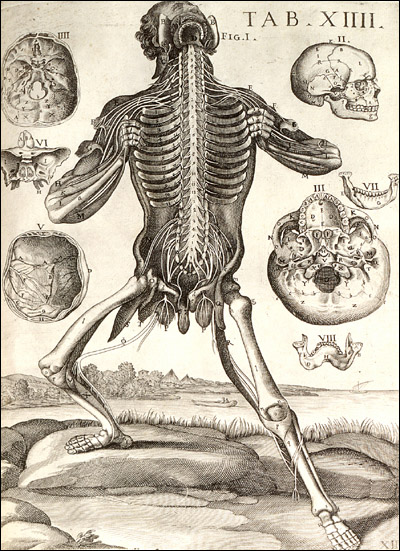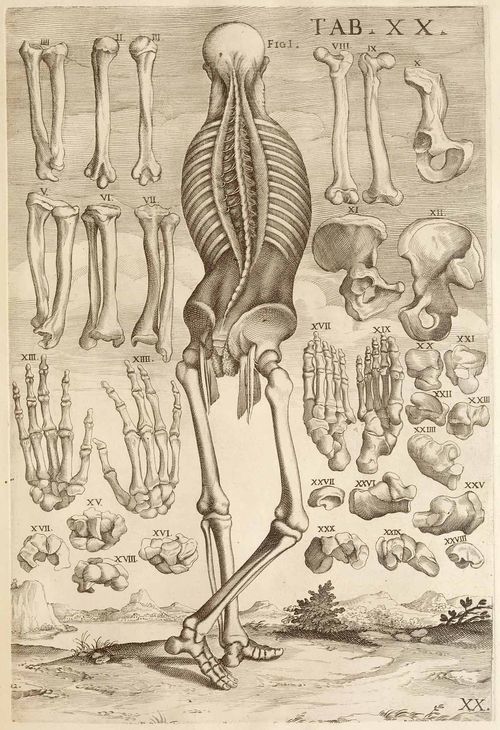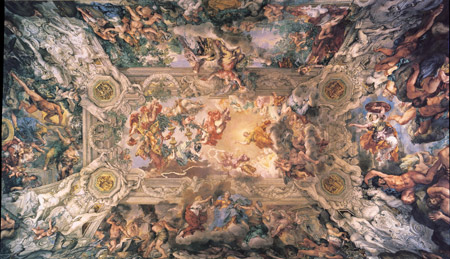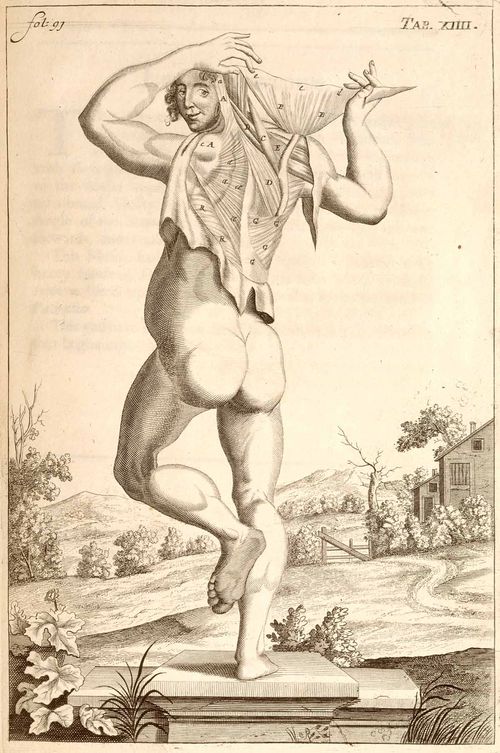JF Ptak Science Books Quick Post
This "dancing" skeleton is the work of artist/anatomical illustrator Pietro Berrettini da Cortona (1596-1669) and appears as a copperplate engraving in his book Tabulae anatomicae...which was printed in Rome in 1741.
[Source: National Library of Medicine.]
He complete this work around 1618 and it was neglected for more than a century, finally seeing publication in 1741. It may be because Mr. da Cortona was busy being an architect and artist-outside-of-anatomy, For example, he did this:
Which is not to say that a giant ceiling to the dedication of a pope is "better" necessarily than anatomical illustration, but it certainly consumes more effort and time.
That said, when da Cortona did these images in his youth he reserved very little in the way of expressive sentiment of the cadaver models. His work was nothing short of extraordinary:
 [Source: National Library of Medicine.]
[Source: National Library of Medicine.]
This is simply magnificent, and the artist is letting everyone know it.
[The full text but with muddy images is available at the Internet Archive,]
A not-armless dancing anatomical figure that isn't nearly as aggressive as the figure above--and in fact seems to have a bit of a "come hither" attitude" is this example from A compleat treatise of the muscles, as they appear in the humane body, and arise in dissection...by John Brown (ca.1642-1702) and which was published in London in 1681:
[Source: http://www.nlm.nih.gov/dreamanatomy/images/1200-dpi/I-D-3-16.jpg]






Comments